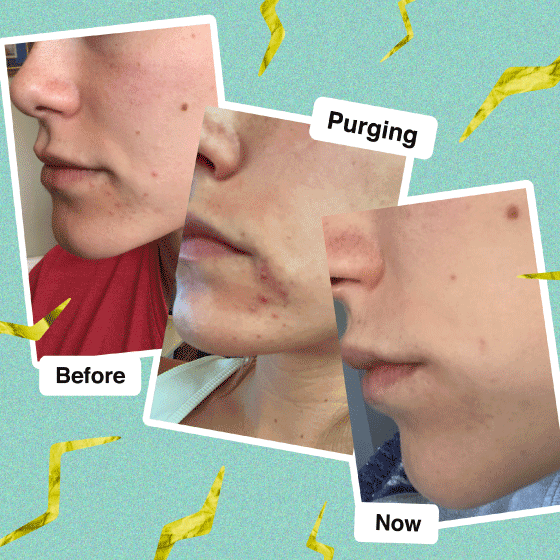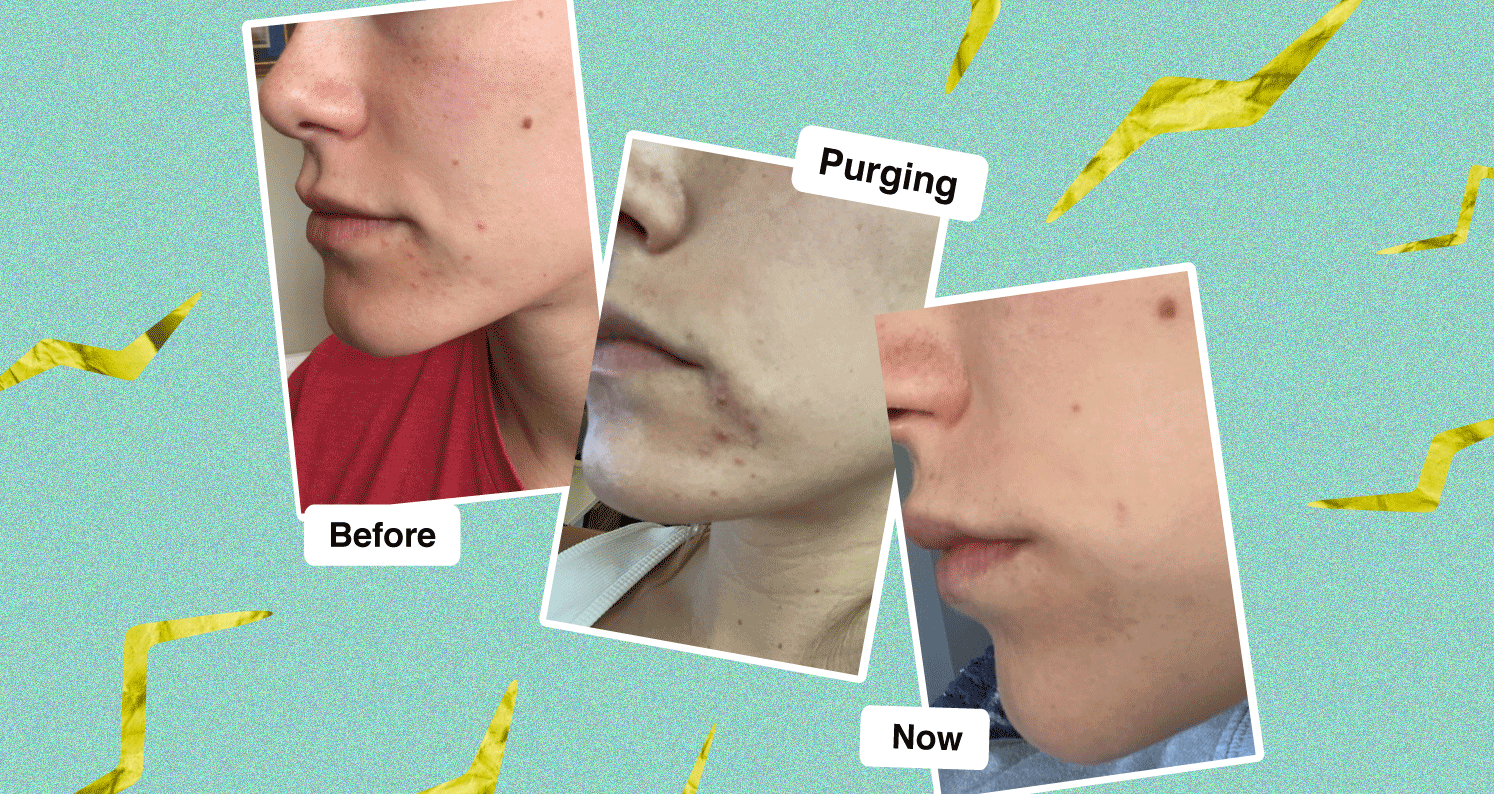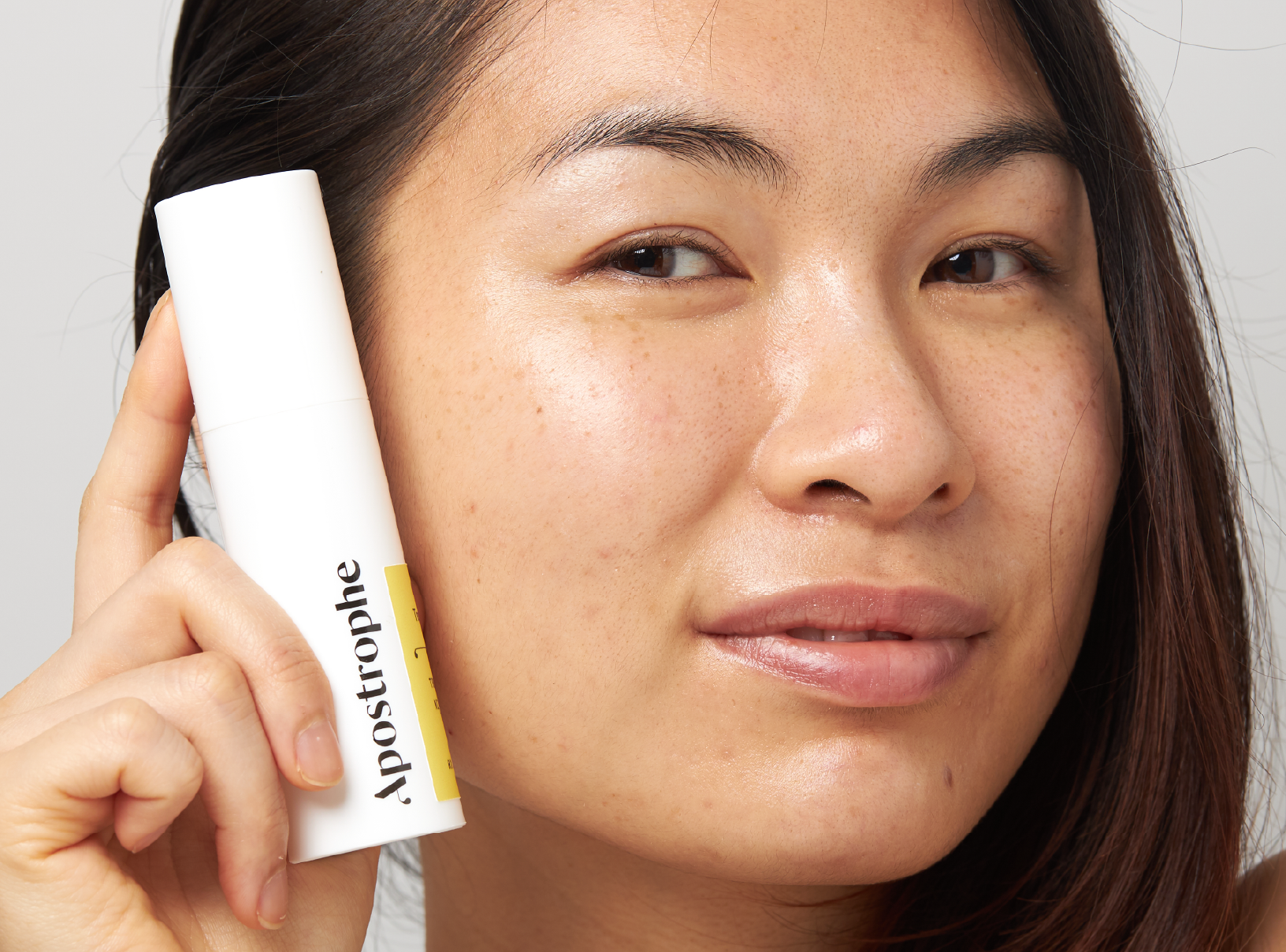Deep Dives
The Tretinoin Acne "Purge": Fact or Fiction


SHARE
Deep Dives
The Tretinoin Acne "Purge": Fact or Fiction
Medically reviewed by Mary Lucas, RN
Written by Apostrophe Team
Last updated 4/5/2024
While tretinoin is highly effective at treating acne over the long term, the first few weeks or even months can be a frustrating and challenging experience.
Many tretinoin users experience a “purge” during the first several weeks of treatment. During this period, acne — the very problem tretinoin is supposed to treat — often gets worse, resulting in everything from the occasional whitehead to severe breakouts.
While there aren’t a ton of studies that focus specifically on the purging aspect of tretinoin, there’s no shortage of anecdotal data.
Search Google for “tretinoin purge” and you’ll find more than 600 thousand results, many of which document the first weeks of treatment from start to finish.
Whether you prefer to describe it as a “purge” or an “adjustment period,” there’s no doubt that tretinoin can cause a significant reaction during the first few weeks of treatment. Below, we’ve explained how and why the purge happens, as well as what you can do to deal with it.
What is a Tretinoin Purge?
Tretinoin works by increasing the rate at which your body produces new skin by speeding up the skin cell turnover process.
When you use tretinoin, new skin cells travel from the inner layers of epidermis up to the surface at a faster rate, giving your skin a fresher appearance.
Over the long term, this is a good thing — removing dead skin cells means fresher skin and fewer blemishes, as well as clearer pores and, generally, a reduction in acne.
However, in the short term, it can lead to acne breakouts, dryness, skin peeling and a range of other frustrating — but temporary — effects.
These unwanted effects — particularly skin dryness and acne breakouts — are widely referred to as the “tretinoin purge.” While they don’t affect everyone, many tretinoin users experience some degree of purge effects during the first several weeks of treatment.
The skin purging from tretinoin usually lasts for anywhere from a couple weeks to a couple months. It can range in severity from a few minor pimples, to major breakouts, skin dryness, flaking, peeling and other skin irritation.
Our guide to the most common and uncommon side effects of tretinoin lists several of the most common purge symptoms, as well as options for minimizing their effects. These effects aren’t unique to topical retinoids like tretinoin — they can also occur with other retinoids, such as Accutane®.
Most of the time, the tretinoin purge solves itself, with symptoms improving over the course of a few weeks or a couple months, as the medication begins to have a more therapeutic effect on your acne.
Dealing With the Tretinoin Purge
Dealing with the tretinoin purge or adjustment period can be a stressful experience — after all, tretinoin is supposed to reduce acne, not cause it. Luckily, there are a few techniques you can use to make the experience more manageable:
Accept it. While waiting for your body to adjust to tretinoin is frustrating, it’s something that’s largely out of your control. Instead of obsessing about breakouts, keep your mind focused on how tretinoin can reduce acne and improve your skin over the long term.
Start with a low strength tretinoin cream. Tretinoin creams, gels and solutions come in a range of concentrations, from 0.025 percent to 0.1 percent tretinoin. If you’re experiencing a severe purge, consider talking to your doctor about switching to a lower concentration. Our guide to tretinoin strengths covers the most widely sold concentrations for tretinoin gels, creams and other topical products. Most studies show that a modest .05% strength tretinoin cream is more than enough to reduce acne and improve your skin.
Avoid touching or scratching your face. It can be tempting to pop pimples as they form or pick away at dry skin, especially during a breakout. During the purge phase, it’s best to leave your skin alone and allow it to heal naturally.
Stay hydrated. In addition to the acne purge, the first few weeks of using tretinoin can involve dry and irritated skin. Staying hydrated may be a huge help, both for improving your skin and for general health and wellbeing.
Use a moisturizer to combat dryness. If your skin is dry and flaky during the first few weeks of using tretinoin, apply moisturizer shortly after using tretinoin to hydrate your skin and reduce dryness.
Avoid direct sunlight. Tretinoin can make your skin significantly more sensitive to UV radiation, resulting in faster and more severe sunburn. During the first several weeks of using tretinoin, take care to avoid excessive amounts of exposure to direct sunlight. If you need to spend time in the sun during the first few weeks of using tretinoin, make sure you use at least SPF 15+ sunscreen (although SPF 30+ is even better!) to protect your skin from UV radiation.
Take progress photos. Tretinoin can take some time to start improving your skin, but when it does the results are noticeable. To stay motivated, take a photo of your face at the end of every month to track your progress and watch your skin improve.
Most of the time, the tretinoin purge solves itself within a few weeks, leaving you with less acne and several months of consistent improvement to look forward to.
If you’ve just started using tretinoin and you’re currently going through the purge, stick with it. It can take months for tretinoin to start working its magic, meaning that patience is very much rewarded.
In the meantime, hold tight and use the tactics listed above to get through the adjustment period with as few downsides as possible. Over the long term, you’ll eventually start to notice a steady, consistent improvement in your skin as the weeks and months go by.
Learn More About Using Tretinoin For Acne
As a safe, effective topical retinoid, tretinoin is one of the most widely used acne treatments on the market.
Our Tretinoin 101 guide and Complete Guide to Using Tretinoin for Acne answer all of the most common questions about using tretinoin to treat acne, from potential side effects to the basics of applying tretinoin to your skin.
This article is for informational purposes only and does not constitute medical advice. The information contained herein is not a substitute for and should never be relied upon for professional medical advice. Always talk to your doctor about the risks and benefits of any treatment.
Shop this post

Tretinoin
Like what you just read? Sign up for our email list to get the scoop on skincare science delivered straight to your inbox.

Education
What is milia?
What is milia? Today, we’re jumping into one type of bump that you may have heard about most commonly in infants — milia.
Read More
Education
Best moisturizer for acne-prone skin
If you have combination acne-prone skin, figuring out which moisturizer is best for your skin might be tough. In this guide, we break down the best moisturizer for combination, acne-prone skin.
Read More
Education
How to build a face care routine
As you get into skincare, it might seem overwhelming, especially trying to figure out the order you're supposed to apply products in. Below, we detail how to build a face care routine for your skin!
Read More
